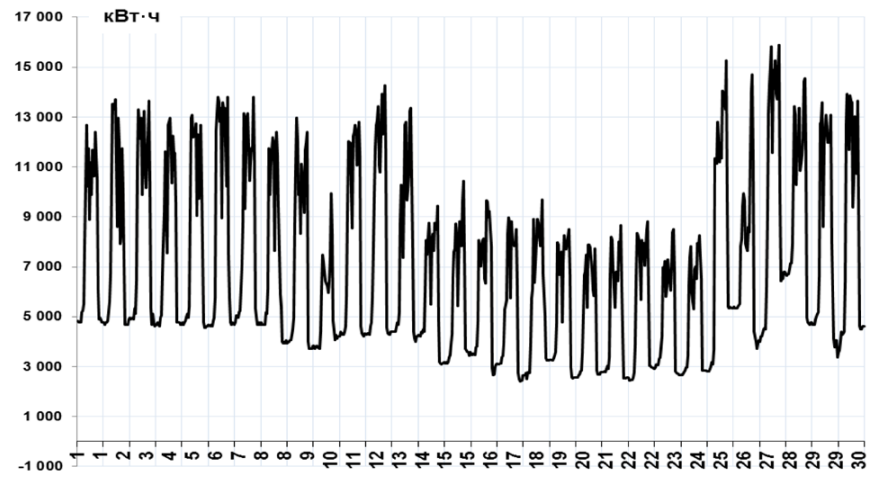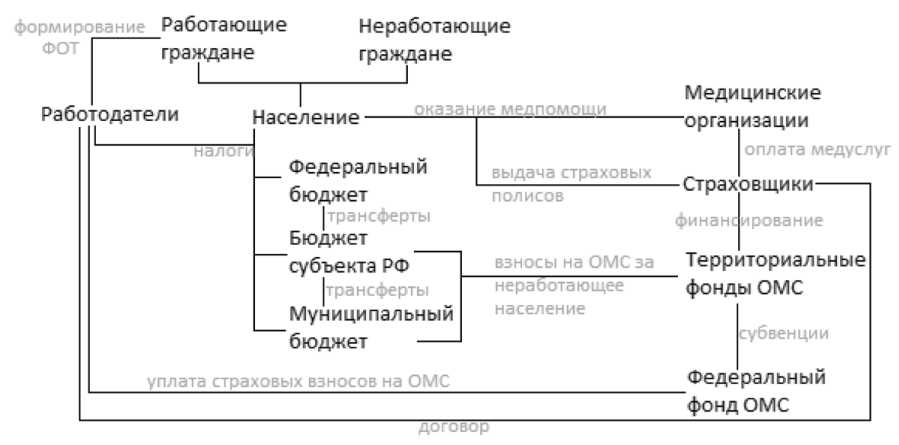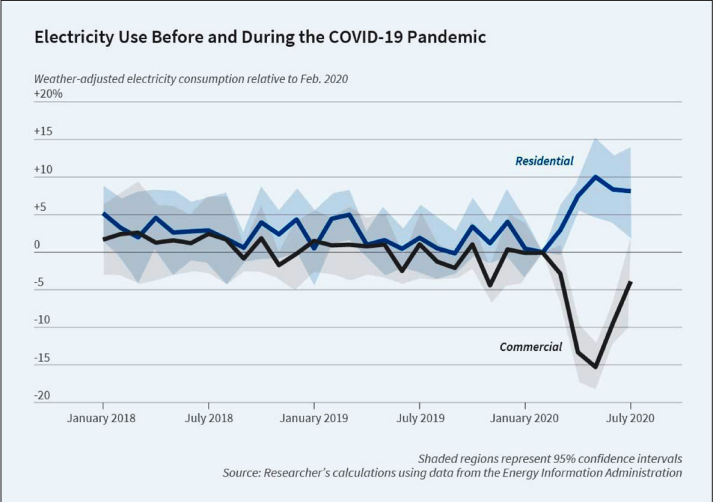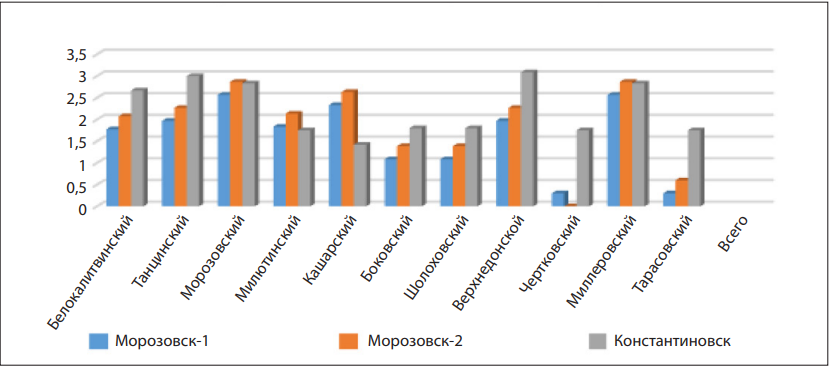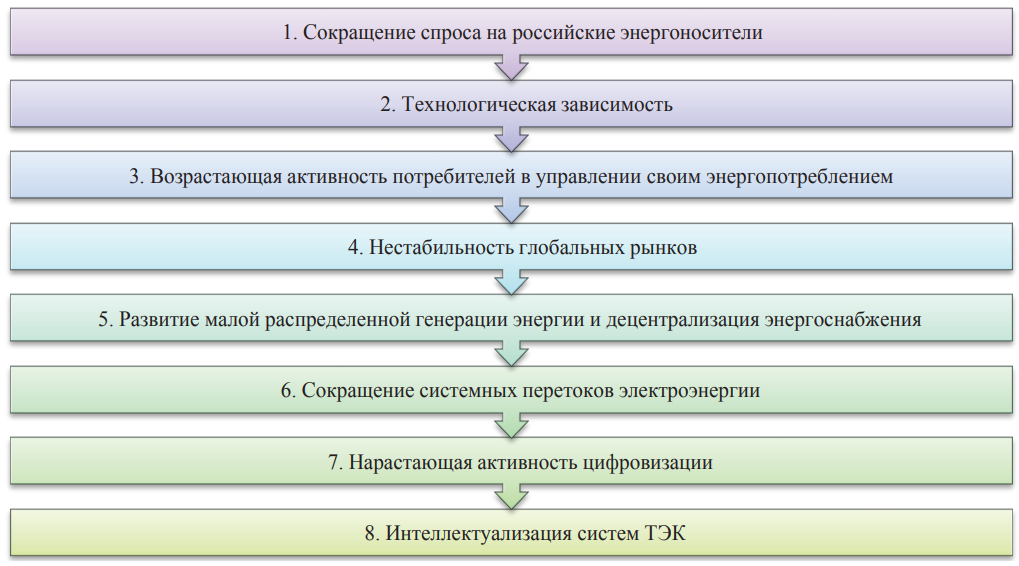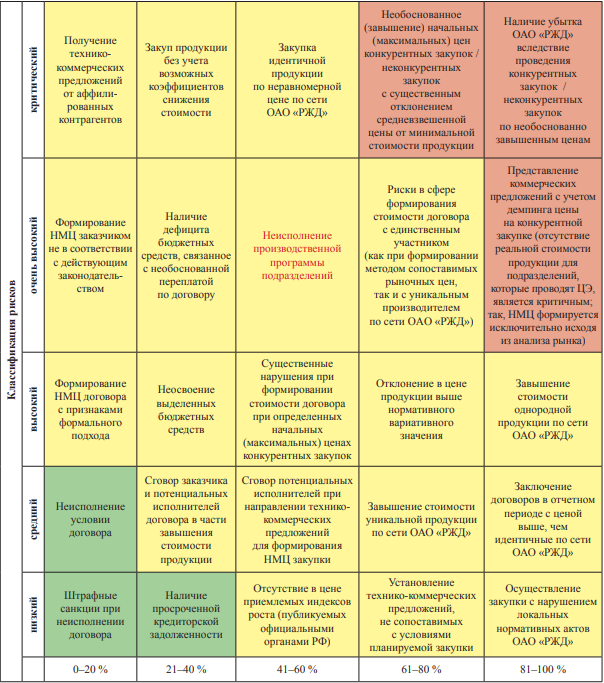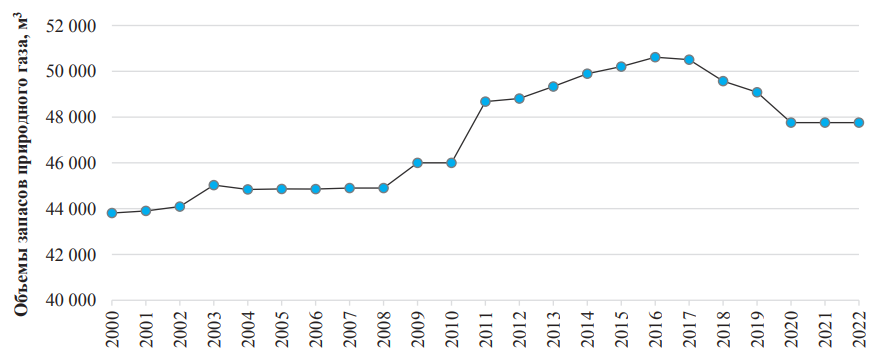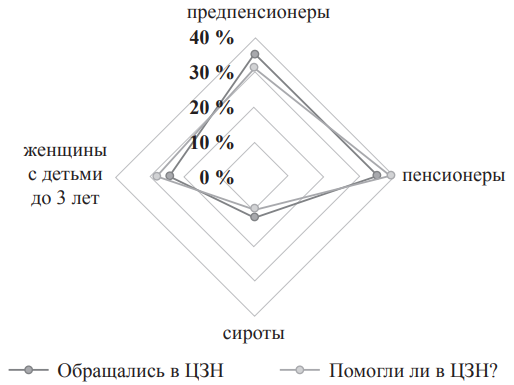ECONOMICS
The article focuses on developing a management model for active energy complexes. Industrial enterprises utilize these complexes, and their management integrates with demand response technology. The authors analyze the mechanisms of pricing for electricity supply for all segments of the electricity cost: the cost of electricity, the cost of electric capacity, the cost of electricity transmission services, formed taking into account the unevenness of demand schedules for electricity consumption. The structures of factors influencing the unevenness of demand for electricity consumption at an industrial enterprise and the structures of factors affecting the operation of the distributed generation system operating at an industrial enterprise have been developed. A management model for active energy complexes in the context of integration with the technology of demand management for electricity has been generated. This model is based on the features of pricing for electricity supply for industrial enterprises, the features of the functioning of distributed generation systems, external and internal factors influencing their work. A feature of the developed model is the analysis of electricity circulation in two main directions: the direction of internal demand for electricity consumption by an industrial enterprise, and the direction of electricity generation by a distributed generation system. Analyzing the two main directions, authors model scenarios of electricity consumption by the enterprise and electricity generation by the distributed generation system within the framework of the active energy complex system.
The article discusses the bond placement on the Moscow Exchange by a manufacturing and trading company. The article states that entering the stock market with exchange-traded bonds provides an effective way for small and medium enterprises to attract investments. A study focused on the initial bond placement of “GazTransSnab” OOO. The company’s financial condition and development dynamics before the bond issue are analyzed, and estimates development is formed after attracting investment. The results show that a bond loan is currently an effective way for small and medium enterprises to attract finance. At the same time, inclusion in the Moscow Exchange “Growth Sector” is preferable, but not a mandatory condition for the successful placement of exchange-traded bonds. The article can serve as a roadmap for small and medium enterprises that have chosen exchange bonds as a tool for attracting investment.
The paper offers a description and comparative analysis of public, insurance and private models of healthcare funding. The paper further emphasizes the primary advantages and disadvantages of each model. There’s a convincing argument for preserving the insurance model of healthcare funding in Russia. At the same time, the authors see the possibility of adapting individual elements of foreign countries’ healthcare funding models to domestic conditions in order to improve the existing model.
The aim of the study is to develop a road map for implementing the Data-Driven approach in the maintenance and wearing management system of electric power equipment. The subject of the study is the Data-Driven approach in the maintenance and wearing management system of electric power equipment in management decisions making in an electric power company. The authors used the following materials and methods: dialectical, scientific knowledge and private scientific (analysis, synthesis, comparison, logical and system-structural analysis, formalization, analysis of regulatory documents), modeling. Enterprises in the electric power industry can use the study’s results to implement the Data-Driven approach in their maintenance and repair management systems for electric power equipment using the provided road map. The road map will help enterprises reduce the loss of financial and material resources caused by equipment downtime and breakdowns.
The article presents a mathematical model for optimizing the organizational processes of an enterprise with discrete production. The model is developed using the mathematical apparatus of linear programming and implemented as a ready-made software solution based on the AMPL generator. The model has a clear architecture: on the one hand, it utilizes the classical apparatus of optimization methods that do not require additional validation; on the other hand, it uses the AMPL language for implementation as the optimal software in terms of ease of use, convenience and practicality, allowing the use of ready-made sets of solvers. The main result of the study is the modeling of the production chain of a discrete production enterprise, including production, transportation, storage, distribution and delivery of products to consumers, aimed at minimizing production costs while complying with technological requirements. The production chain of a snacks enterprise in the Rostov Oblast was used to test the model. This enterprise has two plants in Morozovsk and Konstantinovsk and supplies its products to eleven districts of the oblast. The constructed model serves as a foundation for a user software package designed to support small and medium enterprises.
The research explores contemporary trends in the development of the Russian energy sector, taking into account conditions of uncertainty. This research identifies the most significant factors, external and internal challenges to the development of the fuel and energy complex that arose during the period of global political, economic, environmental and climatic changes. The author analyzes the key performance indicators of the Russian fuel and energy complex for the period 2022–2023. Considering the significant transformation of the fuel and energy complex, along with other industries in Russia, author examines the conditions that will shape the future development of the Russian energy sector. A list of general economic and industry-wide trends has been identified, which should practically strengthen and stabilize the functional, production and structural development of the fuel and energy complex industries in the period 2023–2024. Sustainable development of the Russian energy sector is one of the major factors of economic growth. The author is focusing on the achievements of digital maturity of the fuel and energy complex, the transformation of management and technological processes, technological sovereignty, and entry into new foreign markets. Successful implementation of modern trends will allow implementing response measures to external and internal challenges and threats, stabilize the development of the fuel and energy complex and economic growth, and defend the leading place of the Russian fuel and energy complex in the global economy. The chosen topic, the conducted analysis of the state, problems, challenges, threats, trends, factors and prospects for the development of the fuel and energy complex emphasize the extreme relevance of the study.
Abstract. The purpose of the article is to consider the strategy for managing procurement activities by forming a risk matrix. Authors propose to implement digital transformation tools, using all available enterprise resources, to change work processes. It is their optimization that will allow developing the primary strategy to avoid possible negative consequences.
The subject of the article is the procurement activity of railway transport enterprises. The object is the matrix for constructing risks in its implementation. This matrix will improve the efficiency of the procurement system as a strategically important area for any commercial enterprise. To organize continuous and complete provision of enterprises with the necessary products, while minimizing costs, this article considers the set of matrix areas.
The article analyzes the main factors that reduce potential risks, identifies areas that have a direct impact on work processes, allowing to assess the possibilities of increasing the strategic efficiency of the development of the enterprise’s procurement activities.
The importance of using a mechanism to optimize existing processes is clearly outlined. Implementing this mechanism will increase the competitiveness of the enterprise, reduce costs and increase productivity.
The article analyzes the current state of the gas industry of the Russian Federation. Alongside current challenges and risks, the article examines promising areas for the development of the gas industry. The objectives of the study are to analyze the performance indicators of the gas industry in the Russian Federation and systematize possible strategic directions for the gas industry development of the Russian Federation in the new economic and political reality. The following methods were used to conduct the study: systematization and classification of information, graphical and system analysis. Scientific novelty lies in the authors’ systematization of strategic directions for the gas industry development based on indicators of production, export and consumption of natural gas.
The study aims to analyze the experience of delivering public services in the field of employment, specifically on client interactions at the Omsk and Omsk region’s employment center. The authors of the article focused on the regional labor market and the necessity of developing a client profile for the employment center as key scientific areas. The authors conducted a study that surveyed residents of Omsk and the Omsk Oblast. The survey employed various methods, including online questionnaires, personal interviews, paper-based questionnaires, and interviews with representatives from the Employment Center of Omsk and the Omsk region. The authors carried out two surveys between October 2023 and January 2024. Citizens who applied to the Employment Center of Omsk and the Omsk region, as well as randomly selected citizens of the Omsk region, were involved in the first survey. The second survey was divided into 4 groups, each representing a different studied client profile. Four client profiles were created using generalized data: “orphans”, “women with children”, “pre-retirees”, and “retirees”.
LAW
The study focuses on legal norms regulating prosecutorial activities in combatting corruption and the public relations arising from these activities. The purpose of the study is to make a comprehensive analysis of the above-mentioned legal norms and legal relations, defining the concept of the prosecutor’s office’s activity to combat corruption in order to clarify its boundaries and the areas included. Legal acts, statistical data, and scientists’ perspectives on this issue are the subjects of the study.
The author noted the uncertainty of views in science on what the prosecutor’s office’s activity to combat corruption includes. There is also a lack of a definition of this activity, as well as a structured list of powers of the prosecutor’s office to combat corruption, which does not allow for determining the boundaries of this activity.
Based on the results of the study, the author formulates a definition of the prosecutor’s office’s activity to combat corruption and proposes to include it in the Law on the Prosecutor’s Office. This is a significant contribution of the author to the topic study, since such a definition is absent in scientific works and current legislation. The author also proposes to establish in the Law on the Prosecutor’s Office a certain list of powers granted to the Prosecutor’s Office to combat corruption and identifies a number of problems in the legal regulation of the Prosecutor’s Office’s activities to combat corruption that require further study.
The article considers the legal regulation of the definition of the duties of public formations as subjects of civil society in constitutional reform in the Republic of Belarus. The author notes the fundamental nature of the duties of public formations (along with their rights) in fulfilling their intended purpose, which acts as a structural and functional basis of civil society. The differentiation of constitutional and legal duties of public formations is based on their subject composition and sources of constitutional and legal consolidation. General and special duties in the scope of the constitutional legalization of the All-Belarusian People’s Assembly and civil society are distinguished. Proposals are made for the development of constitutional legislation, including the need to systematize the duties of public formations, discourse in this area, in the context of the development of the Belarusian model of democracy, which has a high degree of constitutional identity.
The organizer of illegal income laundering actually manages the illegal activity and occupies a central place in the structure of the money laundering scheme. Systematization of scientific knowledge about the key figure of the money laundering scheme has a direct meaning for monitoring and law enforcement activities. The author proposes a classification system for the organizers of legalization according to comparison of analytical data and theoretical knowledge: attitude to the object of legalization; the development level of criminal skills of money laundering, as well as personal risks. The article reveals the meaning and role of the scheme organizer, and contributes to increasing the effectiveness of combating money laundering.
The analysis of domestic legislation in ensuring state and public security makes it possible not only to see the existing weaknesses but also to find trends in the main directions of its development. Today, Russia is one of the most important players in the international arena. The existence of problems in social and economic development, migration processes, terrorism, ecology, competitive environment in the international market, development of the military-industrial complex of bordering countries, is permanent. Consequently, Russian legislation in ensuring state and public security must meet modern insurmountable challenges and develop solutions to existing problems. Accordingly, the goal of the research is to characterize the institutions of state and public security at the present stage of the development of the Russian state. The formulation of this goal predetermined the solution of the following research objectives: to establish the place of state and public security at present; to consider the key elements on which these types of security are based; to determine modern threats to state and public security. The study actively used general scientific (analysis, synthesis) and specific scientific methods (formal-logical, comparative-legal, specific-sociological), which was reflected in the results. The author formulated conclusions emphasizing that management in the sphere of ensuring security, both state and public, is a complex process in which almost all structures and institutions of the state are involved. In the sphere of managing state and public security, authorities at all levels must carry out their activities in cooperation with civil society institutions. This process will maximize the mutual provision of social security for citizens and society. Only by taking into account all the specified needs of society, the state itself will develop towards stability, financial well-being and social harmony.


